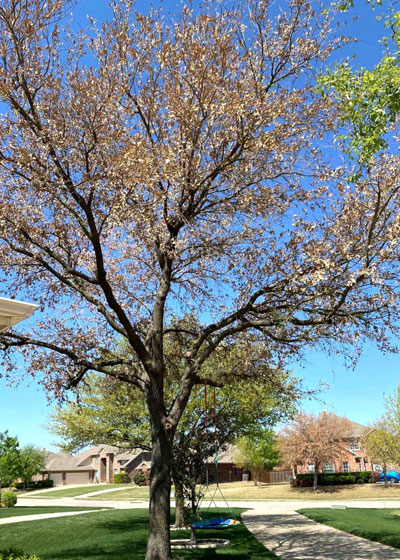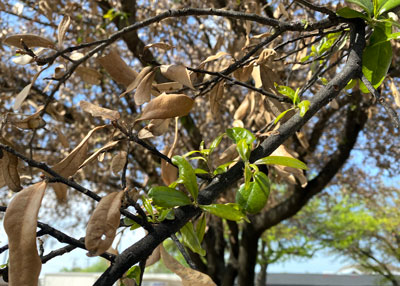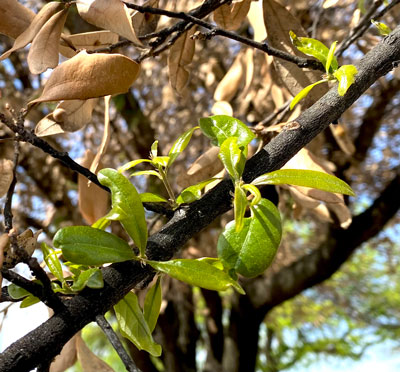Just a little bit longer!
I may have had 500 people ask me about live oaks and whether they would have to be cut down after the freeze. Their leaves turned brown within 48 hours, and many of them dropped all their foliage by the end of that week in February.

Many of Texas’ live oaks still look rather sullen, as if they’re not going to make it, so I called several noted foresters and state-recognized arborists.
I reported their comments in a Facebook post last Friday, and more than a quarter-million people have looked at that commentary. Obviously, it’s still a hot topic. In fairness, it also addresses red oaks, crape myrtles and vitex (three other late-leafers).

All of the tree experts are still advising patience. They’re telling us to wait, saying that live oaks vary genetically and that they will leaf out at their own rates. If you drive around your town, you’ll see evidence of that. Some that were bare 10 days ago are fully leafed and growing now. Others are close behind with tassels and buckets of pollen. Still others have buds swelling and about to start growing, while some are still sitting dormant.
But don’t you dare let anyone start cutting your bare live oaks down yet. Not unless they were dead going into the winter. Arborists and foresters say that it may well be May before some of them start growing for real.

In the meantime, give them your normal good care. Water them deeply, and fertilize them as you feed your lawngrass by making an extra pass around them with the spreader.
Otherwise, just sit tight and keep watching. Nature is amazing, especially in this most unusual year.
Note: I’ll address crape myrtles that are slow to regrow in a week or two here. It’s still too early to make the call on them, especially in North Texas. Watch for details here.
